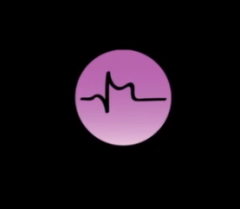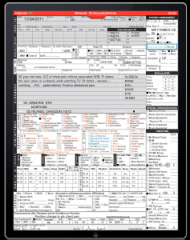![]()
![]()
![]()
Use LEFT and RIGHT arrow keys to navigate between flashcards;
Use UP and DOWN arrow keys to flip the card;
H to show hint;
A reads text to speech;
21 Cards in this Set
- Front
- Back
- 3rd side (hint)

Ref No 506 |
Trauma Triage |
Huntington Memorial |
|

Ref No 513 |
STEMI destination |
"Unlucky 13" |
|

Ref No 521 |
Stroke patient destination |
ASC |
|

Ref No 606 |
Documentation of prehospital care |
|
|

Ref No 608 |
Retention and disposition of prehospital patient care records |
|
|
|
MAR |
Most Available Receiving Facility |
|
|
|
AMA |
Refusal of medically necessary treatment or transportation |
|
|

EDAP |
Emergency Department Accepting Pediatrics |
|
|
|
SRC
|
STEMI receiving center |
|
|
|
ASC
|
Acute Stroke Center
|
|
|
|
PMC |
Pediatric Medical center
|
|
|
|
PTC
|
Pediatric trauma center |
|
|
|
Extremis |
Requires immediate transport to the most accessible receiving (MAR)
- Obstructed airway, Bleeding out, Cardiac arrest
- Other patients, whose lives would be jeopardized by transport to any but the MAR |
|
|
|
Red lettered text = ___________ criteria |
Trauma |
|
|
|
Blue lettered text = ___________ criteria |
Guideline |
|
|
|
These two drugs are documented in Meds/Defib and under their own section to allow for documentation of waste. |
Midazolam and Morphine |
|
|
|
ROSC |
Return of Spontaneous Circulation
(CPR gets 30% circulating blood volume and >10 on the CO2) |
|
|
|
SFTP |
Standard Field Treatment Protocol |
|
|
|
When signing a patient out AMA, be sure to document what? |
An alternative plan of action |
|
|
|
ED Sat |
If the patient is diverted from the MAR because they have requested diversion of the patients due to ED saturation. |
|
|
|
What is an ALTE? |
Apparent Life Threatening Event
an episode that is frightening to the observer and is characterized by some combination of apnea (central or obstructive), color change (cyanotic, pallid, erythematous or plethoric) change in muscle tone (usually diminished), and choking or gagging. |
|

